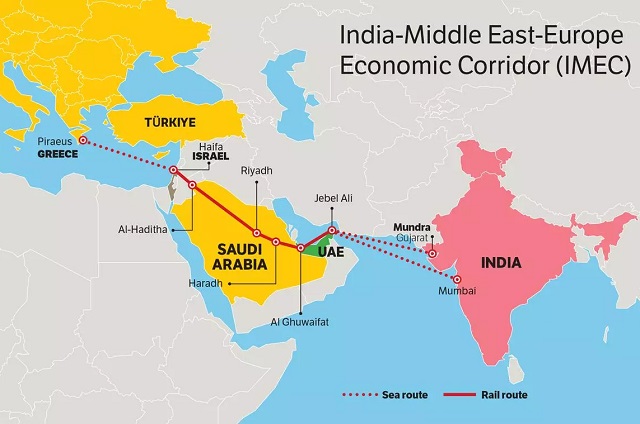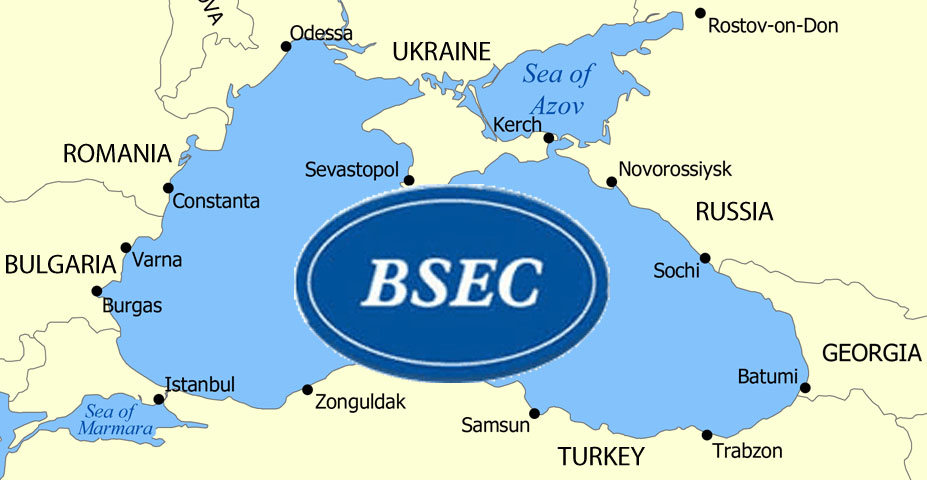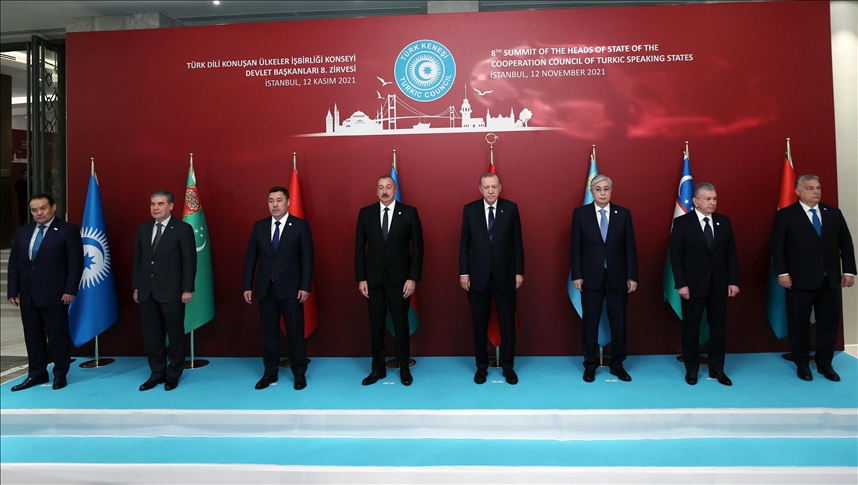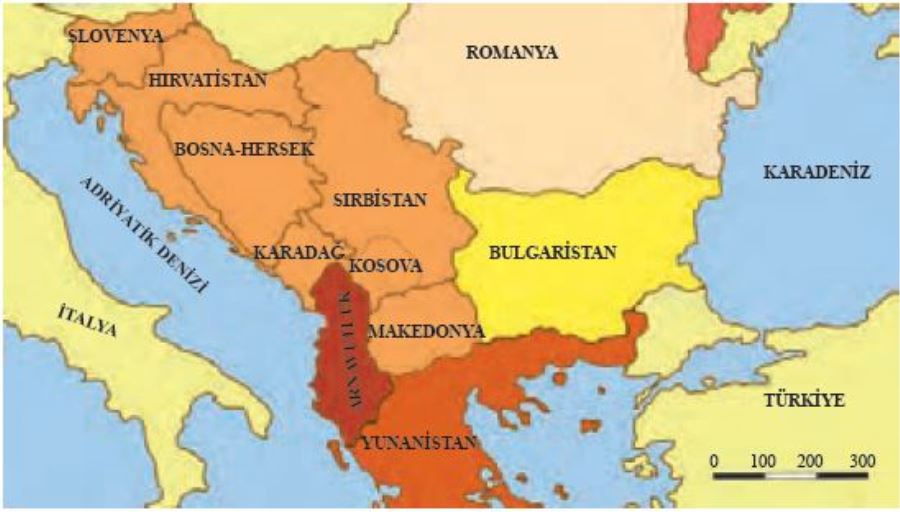
Deniz ÜNVER
Independent Researcher
AVİM Scholar in Residence İrem Akın contributed to the translation of this article.
On Saturday, 29 April, a ceremony was held on the 107th anniversary of the Victory at Kut al-Amara (Siege of Kut) at the Turkish Martyrs' Cemetery in the Wasit (Kut) Province, south of the Iraqi capital Baghdad[1]. The Turkish ambassador to Baghdad, who attended the ceremony, stated, "This is a brilliant victory[2] after the Çanakkale [Gallipoli] Victory, in which our armies first repelled the British attacks, then blockaded, neutralized, and captured British troops."
In order to understand the Victory at Kut al-Amara and its consequences, it is important to know the historical process leading up to this victory. Following the outbreak of the First World War, in September 1914, the British began preparations to invade Iraq against the possibility of going to war with the Ottoman Empire[3]. Since Iraq was on the route to India, it was important for the British to secure Iraq. In addition, Iraq became a center of interest for the British due to its proximity to Middle Eastern energy resources.
However, the British had lost their reputation with the defeat at Çanakkale[4]. The British Empire wanted to have this loss of face forgotten by capturing Baghdad and achieving a military victory[5]. For this reason, General Townshend received the order to destroy the Turkish troops and occupy Kut from the Indian Headquarters on 23 August 1915[6]. In this context, General Townshend was told by British political officer Sir Percy Cox that entering Baghdad was politically important and would have almost as much impact as occupying Istanbul[7]. As can be understood from this suggestion, occupying Baghdad was of great importance for the British Empire.
In the face of these intentions of the British, Miralay Nurettin Bey (Bearded Nureddin Pasha) took a defensive position in the Essin region south of Kut[8]. On 12 September 1915, British troops attacked Ali Gharbi, south of Essin, and won the battle. Turkish troops suffered heavy losses and, as a result, were forced to retreat on 28 September. Continuing their advance, the British forces invaded Kut on 29 September[9]. Thus, with the occupation of Kut, a very large area came under British rule. Almost all of the Basra Province and its waterways came under British control[10].
General Townshend, who wanted to continue his advance towards Baghdad, attacked the Turkish troops in Ctesiphon (Selman-ı Pak), located close to Baghdad, on 22 November in accordance with the orders he had received. However, the Turkish forces defeated the British troops at Ctesiphon. Following the success of the Turkish troops, General Townshend and his troops were forced to take refuge in the town of Kut on 25 November[11]. The British Empire thus lost half of its combat forces at Ctesiphon[12].
On 27 December 1915, the forces of Nureddin Pasha, the commander of Iraq and its region, besieged the town of Kut on the orders of Marshal Baron von der Goltz, who had been appointed commander of the newly established Sixth Army of the Ottoman Empire. The British forces under the command of General Townshend attacked the Turkish troops with the Tigris Corps to recover Kut[13]. Within this framework, Turkish troops lost the Battle of Sheikh Sa'ad on 4 January 1916 with heavy casualties[14]. Upon this situation, Nureddin Pasha was dismissed and Halil Pasha, Enver Pasha's uncle who was two years younger than him, was appointed in his place on 6 January 1916.
However, the casualties of the British forces were also high; they had lost around 5000 soldiers[15]. As a matter of fact, British casualties increased even more in the Battles of Wadi, Hanna, and Sabis. In the Battle of Hanna on 21 January 1916, the British lost another 2700 soldiers, and the British forces were subsequently repulsed[16].
Meanwhile, the condition of the British soldiers in Kut was dire. This was due to widespread epidemics and lack of provisions. Although measures such as slaughtering horses and mules were taken to address the shortage of food, no definitive solution could be provided. By the time of the British defeat, at least 20 soldiers were dying of starvation and disease every day[17]. General Townshend had no choice but to start negotiations to break the Turkish siege. For this purpose, he offered to give Halil Pasha 1 million British pounds, and in return, he demanded that he be allowed to go to India with his army[18]. However, the Turkish side rejected this offer. Finally, on 29 April 1916, having no other choice, General Townshend and the soldiers under his command surrendered. After this surrender, 5 generals and 476 officers (272 British and 204 Indian) were taken prisoners[19]. In addition, 9580 combat-capable soldiers (2592 British and 6988 Indian) and 1306 wounded soldiers were captured[20].
The Ottoman Army treated these prisoners in a humane manner. Halil Pasha returned the captured General Townshend's sword to him[21]. He thus showed a humane attitude towards Townshend and clearly showed his intention to protect his military honor[22]. In addition, aid was provided to the captured soldiers through the Red Crescent[23] and eventually, the British prisoners were repatriated on 2 May 1916[24].
Following this great victory at Kut al-Amara , Halil Pasha was awarded the gold Medal of Distinguished Service for his achievements[25]. The First Infantry Regiment, one of the units under his command, was also awarded gold and silver Medals of Distinguished Service [26]. He was given the surname Halil Pasha Kut in honor of this victory with the Surname Law enacted after the establishment of the Republic of Türkiye.
The heavy defeat of the British forces at Kut al-Amara was an utter disappointment for the British Empire and had wide repercussions. After this victory of the Turks, the British people and politicians no longer hid their reaction against the army. The Turkish victory at Kut al-Amara was echoed not only in the British press but also in the media organs of other Western countries. For example, Germany's Vossiche Zeitung described Kut al-Amara as the most painful military blow to the British Empire [27]. For the British, Kut al-Amara is still remembered as the worst defeat in British military history, so much so that British Historian James Morris has described the loss of Kut as the most humiliating defeat in British military history[28].
As a result, the Victory at Kut al-Amara has an important place in Turkish history. Since 1916, it has been included in history textbooks and celebrated as a holiday. It is considered to be the greatest achievement of the Turkish side during the First World War after the Çanakkale Victory.
*Picture: https://www.aa.com.tr/tr/turkiye/turk-tarihinin-buyuk-zaferi-kutul-amare/2223000
[1] Ali Makram Ghareeb, “Kut'ül Amare Zaferi'nin 107. yılında şehitler Kut'ta törenle anıldı”, Anadolu Ajansı, Nisan 29, 2023, http://https://www.aa.com.tr/tr/dunya/kutul-amare-zaferinin-107-yilinda-sehitler-kutta-torenle-anildi/2884834
[2] Ibid.
[3] İsmet Üzen, “İki Kuşatma, İki Komutan: Plevne (1877) VE Kut’ül -Amare (1915-1916), Gazi Osman Paşa Ve Tümgeneral C VF Townshend." Güneydoğu Avrupa Araştırmaları Dergisi 15 (2014): 1-27.
[4] Mahir Küçükvatan, "İngiliz Basınında Osmanlının Kut’ül-Amare Zaferi." Çağdaş Türkiye Tarihi Araştırmaları Dergisi 13.26 (2013), s. 58.
[5] Ibid, 58.
[6] Ibid, 59.
[7] Ibid, 59.
[8] Ibid, 59.
[9] Ibid, 59.
[10] Ibid, 59.
[11] Ibid, 62.
[12] Ibid, 59.
[13] Serdar Açıl, “Türk Tarihinin Büyük Zaferi: Kut’ül Amare”, Anadolu Ajansı, Nisan 28, 2023, https://www.aa.com.tr/tr/turkiye/turk-tarihinin-buyuk-zaferi-kutul-amare/2223000
[14] Ibid.
[15] Küçükvatan, "İngiliz Basınında Osmanlının Kut’ül-Amare Zaferi," s. 65.
[16] Açıl, “Türk Tarihinin Büyük Zaferi: Kut’ül Amare”, Anadolu Ajansı.
[17] Küçükvatan, "İngiliz Basınında Osmanlının Kut’ül-Amare Zaferi," s. 77.
[18] Açıl, “Türk Tarihinin Büyük Zaferi: Kut’ül Amare”, Anadolu Ajansı.
[19] Şükrü Kanatlı, Irak Muharebelerinde 3’üncü Piyade Alayı Hatıraları (Ankara: Genelkurmay ATASE Yayınları, 2006), s.27.
[20] Ibid.
[21] Enes Demir, "Kutü’l Amâre’de Esir Alınan İngiliz Birlikleri ve Esirlerin Durumları," Kûtü’l-Amâre Zaferi’nin 100. Yılı Münasebetiyle I. Dünya Savaşı'nda Irak Cephesi (2016): s. 133.
[22] Ibid, 133.
[23] Ibid, 134.
[24] Ibid, 136.
[25] Küçükvatan, "İngiliz Basınında Osmanlının Kut’ül-Amare Zaferi," s. 79.
[26] Ibid, 79.
[27] Ibid, 80.
[28] Açıl, “Türk Tarihinin Büyük Zaferi: Kut’ül Amare”.
© 2009-2025 Avrasya İncelemeleri Merkezi (AVİM) Tüm Hakları Saklıdır
Henüz Yorum Yapılmamış.
-
 POLITICS OF ECONOMIC CORRIDORS - 13.12.2023
POLITICS OF ECONOMIC CORRIDORS - 13.12.2023
Deniz ÜNVER 13.12.2023 -
 HUMAN RIGHTS VIOLATIONS OF THE REFUGEES: THE CASE OF FRONTEX AND THE EU - 14.09.2021
HUMAN RIGHTS VIOLATIONS OF THE REFUGEES: THE CASE OF FRONTEX AND THE EU - 14.09.2021
Deniz ÜNVER 14.09.2021 -
 BLACK SEA SECURITY AND THE SIGNIFICANCE OF BSEC IN THE REGION - 31.10.2022
BLACK SEA SECURITY AND THE SIGNIFICANCE OF BSEC IN THE REGION - 31.10.2022
Deniz ÜNVER 31.10.2022 -
 ABD VE RUSYA ARASINDAKİ İNSANSIZ HAVA ARACI ANLAŞMAZLIĞI BAĞLAMINDA KARADENİZ EKONOMİK İŞ BİRLİĞİ VE KARADENİZ’DE GÜVENLİK - 27.03.2032
ABD VE RUSYA ARASINDAKİ İNSANSIZ HAVA ARACI ANLAŞMAZLIĞI BAĞLAMINDA KARADENİZ EKONOMİK İŞ BİRLİĞİ VE KARADENİZ’DE GÜVENLİK - 27.03.2032
Deniz ÜNVER 28.03.2023 -
 BLOG: TÜRK DÜNYASI YÜKSELİŞTE: TÜRK DEVLETLERİ TEŞKİLATI ZİRVESİ - 28.12.2021
BLOG: TÜRK DÜNYASI YÜKSELİŞTE: TÜRK DEVLETLERİ TEŞKİLATI ZİRVESİ - 28.12.2021
Deniz ÜNVER 28.12.2021
-
 SÖZDE BATI BALKANLAR - YENİ ADANA - 16.11.2021
SÖZDE BATI BALKANLAR - YENİ ADANA - 16.11.2021
Hasan Sevilir AŞAN 20.11.2021 -
 YUNANİSTAN’IN VE RUMLARIN POLİTİK HÜSRANI - 26.09.2022
YUNANİSTAN’IN VE RUMLARIN POLİTİK HÜSRANI - 26.09.2022
Ata ATUN 26.09.2022 -
 PEACE IN PIECES: TRUMP-PUTIN MEETING AND FUTURE OF UKRAINE - DAILY SABAH - 21.08.2025
PEACE IN PIECES: TRUMP-PUTIN MEETING AND FUTURE OF UKRAINE - DAILY SABAH - 21.08.2025
Teoman Ertuğrul TULUN 22.08.2025 -
 PLEASE LEAVE HISTORY TO HISTORIANS - ARTICLE BY MAXIME GAUIN, DAILY SABAH, 21 MAY 2016
PLEASE LEAVE HISTORY TO HISTORIANS - ARTICLE BY MAXIME GAUIN, DAILY SABAH, 21 MAY 2016
Maxime GAUIN 25.05.2016 -
 GERMANY’S HIGH REPRESENTATIVE CANDIDATE IN BIH, CHRISTIAN SCHMIDT, AND HIS POSSIBLE USE OF BONN POWERS - 07.04.2021
GERMANY’S HIGH REPRESENTATIVE CANDIDATE IN BIH, CHRISTIAN SCHMIDT, AND HIS POSSIBLE USE OF BONN POWERS - 07.04.2021
Senad SEVDİK 26.04.2021


